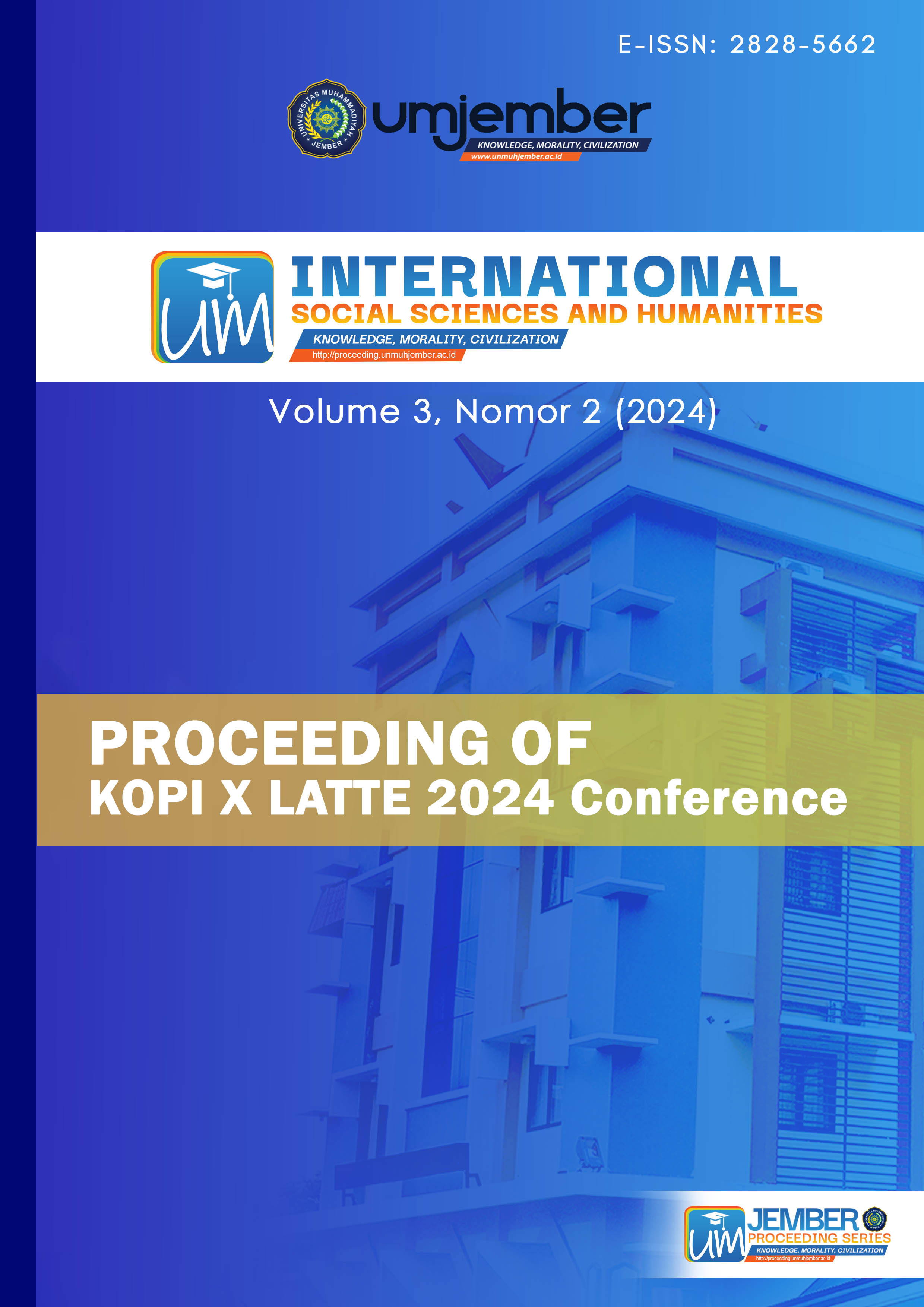In-Vitro Fermented Civet Coffee as an Alternative Coffee from the Perspective of Halal and Civet Conservation
DOI:
https://doi.org/10.32528/issh.v3i2.620Keywords:
In-Vitro Fermentatio, Civet Coffee, Halal, Civet ConservationAbstract
Coffee is a highly valued economic commodity. While the export value of coffee from Indonesia is still ranked third in the world, there are several Indonesian specialty coffees that hold significant economic value. One of them is civet coffee, produced through in-vivo fermentation within the civet’s body. During fermentation inside the civet’s body, coffee undergoes enzymatic processes facilitated by enzymes from microorganisms and enzymes from the civet’s stomach. This in-vivo fermentation process imparts a unique quality to the coffee, making it highly favored by many worldwide. Based on the concept of in-vivo enzymatic processes, it is essential to conduct in-vitro (outside the body) fermentation processes for civet coffee. This is done as an effort to standardize the quality of civet coffee and to exercise caution regarding potential contaminants or issues related to halal certification. Additionally, this approach aims to reduce the capture of civets for in-vivo fermentation processes. Furthermore, it contributes to increasing the local coffee’s market value, aiming to match or surpass the specialty status of civet coffee.
Downloads
References
(MUI), M. U. (n.d.). Fatwa Majelis Ulama Indonesia (MUI) No. 07/2010 tentang Kopi Luwak.
Amri, A. B. (2009). Permintaan Tinggi, Ekspor Kopi Luwak Dibatasi. Jakarta: Kompas.com.
Budihardjo, A., & Sasongko, P. S. (2013). Jaringan Pemasaran Kopi Rakyat di Kabupaten Jember. Jember: Universitas Jember.
Chakraborty, A., & Bhowal, J. (2015). Isolation, Identification and Analysis of Probiotic Properties of Lactobacillus Spp. from Selected Regional Dairy Product. Int.J.Curr.Microbiol.App.Sci, 4(6), 621-628.
Chen, J., & al., e. (2008). Isolation and characterization of polymorphic microsatellite markers for the masked palm civet (Paguma larvata). Biochemical Genetics, 46(7-8), 392-397. doi:10.1007/s10528-008-9157-7
Cheong, M., & al., e. (2013). Volatile Composition and Antioxidant Capacity of Arabica Coffee. Food Research International. Elsevier Ltd,, 51(1), 388-396. doi:10.1016/j.foodres.2012.12.058.
deBruyn, F., & al., e. (2017). Exploring the impacts of postharvest processing on the microbiota and metabolite profiles during green coffee bean production. Applied and Environmental Microbiology, 83(1), e02398-16. doi:10.1128/AEM.02398-16
Hadipernata, M., & Nugraha, S. (2012). Identifikasi Fisik, Kimia Dan Mikrobiologi Biji Kopi Luwak Sebagai Dasar Acuan Teknologi Proses Kopi Luwak Artificial. Prosiding InSINas, (pp. 117-121).
Haryati, N. (2008). Kontribusi Komoditas Kopi Terhadap Perekonomian Wilayah Kabupaten Jember. Journal of Social and Agricultural Economics, 2(1), 56-69.
Ikhwan, B. (2013). Pesona Kopi Luwak. Warta Ekspor, 3-5.
Kemendag, D. P. (2013, 12 4). Pesona Kopi. Retrieved from Dirjen Pen Kemendag: http://djpen.kemendag.go.id/app_frontend/admin/docs/publication/1551390367153.pdf. Diakses 4-12-2019
Marcone, M. (2004). Composition and Properties of Indonesian Palm Civet Coffee (Kopi Luwak) and Ethiopian Civet Coffee. Food Research International, 37(2004), 901-912. doi:10.1016/j.foodres.2004.05.008
Mulato, S. (2018). Modul Pelatihan CCTC Budidaya, Pengolahan Buah, dan Produksi Bubuk Kopi. Retrieved from Coffee and Cocoa Training Center: http://www.cctcid.com/2018/08/14/modul-pelatihan-cctc-budidaya-pengolahan-buah-dan-produksi-bubuk-kopi/
Munandar, K., Afriayanti, D., & Karimah, I. (2022). Isolation and Characteristics of Lactic Acid Bacteria In Feces of Jember Local Mongoose. UM Jember Proceeding Series, 43-47.
Muzaifa, M., A, P., A, A., F, R., D, H., I, S., & Febriani. (2006). Kopi Luwak: Produksi, Mutu Dan Permasalahannya. Aceh: Syiah Kuala University Press.
Pos, J. (2019). Ekonomi dan Bisnis. Jawa Pos.
Prayuginingsih, H., Santosa, T., Hazmi, M., & Rizal, N. (2012). Peningkatan Daya Saing Kopi Rakyat Di Kabupaten Jember. Journal of Social and Agricultural Economics, 6(3), 26-40.
Rahayu, S., Rahmawati, & Kurniatuhadi, R. (2018). Deteksi Bakteri Selulolitik pada Kotoran Luwak (Paradoxurus hermaphroditus) dari Kebun Binatang Bandung. Protobiont, 7(2), 19-28.
Rahmawati, N. (2017). Isolasi Karakterisasi Bakteri Proteolotik dari Feses Hewan Luwak (Paradoxurus hermaphroditus). Jurnal Prodi Biologi, 6(1), 1-8.
Tika, IN, Pujani, N., & Agustina, I. (2017). Kandungan Kafein Pada Kopi Dengan Fermentasi Menggunakan Mikroba Yang Diisolasi Dari Kopi Kotoran Luwak Kebun Kopi Di Kabupaten Buleleng. Seminar Nasional Riset Inovatif, (pp. 83-86).
Wahyu, R., & Suwandari, A. (2012). Faktor-Faktor Yang Mempengaruhi Pendapatan Dan Prospek Usahatani Kopi Rakyat Di Desa Sumberbulus Kecamatan Ledokombo Kabupaten Jember. JSEP, 6(3), 43-52.
Downloads
Published
Issue
Section
License

This work is licensed under a Creative Commons Attribution-NonCommercial 4.0 International License.


